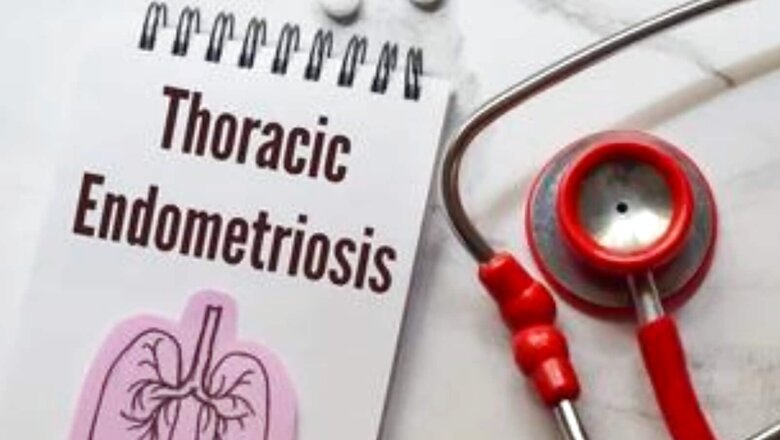
views
Thoracic endometriosis is a rare disorder in which endometrial tissues develop around the lungs. This rare disorder can lead to chest pain, shortness of breath, and coughing throughout the menstrual cycle. Thoracic endometriosis is clearly different from endometriosis, which is more common and develops as the growth of uterine lining-like cells in the lower abdomen and pelvic region.
Chest X-rays, CT scans, and MRIs can be used to diagnose the condition. Endometriosis patches that grow around the lungs can cause life-threatening complications. The most common type of extragenital endometriosis is known as thoracic endometriosis.
What causes thoracic endometriosis?
Experts aren’t sure what causes thoracic endometriosis, but there are a few theories. According to a report in Healthline, it could be a combination of different factors. The oldest theory is the retrograde menstruation theory, which holds that endometrial cells move inadvertently through the fallopian tubes to other parts of the body. According to the theory, once those cells leave the uterus and go on to attach to other surfaces and begin to grow.
How is it diagnosed?
According to Healthline, it can be difficult to diagnose thoracic endometriosis. To begin with, it’s an uncommon disorder, so doctors aren’t used to seeing it. It can also present with nonspecific symptoms such as cough, which can be confused with other conditions.
To diagnose thoracic endometriosis, your doctor may use one or more imaging tests. This could include bronchoscopy, chest X-rays, CT scans, and magnetic resonance imaging (MRI).
The various tests can be useful for looking at specific things. It is also reported that chest X-rays and CT scans are particularly useful in detecting pneumothorax and hemothorax. Meanwhile, an MRI may be more useful for detecting endometrial growths in the chest cavity.
Treating thoracic endometriosis
Just as there is no cure for pelvic endometriosis, there is no cure for thoracic endometriosis. You can, however, manage your symptoms depending on the severity of your situation and symptoms. Your doctor may begin by discussing medical treatment first. If medical treatment is ineffective, your doctor would suggest surgical options.
Medical treatment
As per Healthline, endometriosis symptoms can be a result of high hormone levels, which is why your doctor may advise using medications to control or reduce those hormones. The spread or development of endometrial tissue may also be prevented by hormone suppression therapy.
Some of the medications used to treat thoracic endometriosis are also used to treat regular endometriosis. These include gonadotropin-releasing hormone (Gn-RH), agonists and antagonists, oral contraceptives, progestin, danazol and aromatase inhibitors
You should talk to a doctor about your worries if you have these symptoms, especially if you have a history of endometriosis symptoms.
Read all the Latest Lifestyle News here

















Comments
0 comment